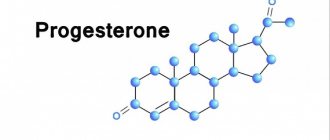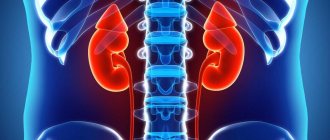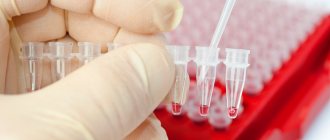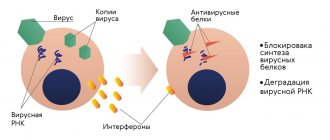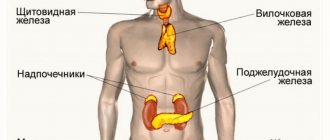Blood is the medium in the human body through which oxygen and nutrients are delivered to tissues, toxins and pests are eliminated, communication between organs and systems is carried out through the transfer of hormones, and protection against infectious agents is organized.
Everything that blood consists of has been fairly well studied and measured. Therefore, any changes in the composition serve as a very informative diagnostic sign of the disease, help to distinguish one disease from another, and take preventative and treatment measures.
There are physiological and age-related changes in humans. They also affect the composition of the blood.
Blood composition
Blood consists of 4 main components:
- red blood cells - red blood cells that transport oxygen from the lungs to the human organs;
- white blood cells - leukocytes responsible for fighting infections that attack the body;
- blood platelets - platelets that ensure blood clotting, thereby protecting the body from fatal blood loss due to injuries and cuts.
All these cells are suspended in blood plasma, which not only serves as a transport medium for blood cells, moving them throughout the human body, but also contains proteins and salts necessary for the body.
Blood structure
What is blood? This is tissue that consists of plasma and special blood cells contained in it in the form of a suspension. Plasma is a clear, yellowish liquid that makes up more than half of the total blood volume. More information about the composition and functions of plasma can be found here. It contains three main types of shaped elements:
- erythrocytes are red cells that give the blood a red color due to the hemoglobin they contain;
- leukocytes – white cells;
- platelets are blood platelets.
Arterial blood, which comes from the lungs to the heart and then spreads to all organs, is enriched with oxygen and has a bright scarlet color. After the blood gives oxygen to the tissues, it returns through the veins to the heart. Deprived of oxygen, it becomes darker.
About 4 to 5 liters of blood circulate in the circulatory system of an adult. Approximately 55% of the volume is occupied by plasma, the rest is formed elements, with the majority being erythrocytes - more than 90%.
Blood is a viscous substance. Viscosity depends on the amount of proteins and red blood cells contained in it. This quality affects blood pressure and movement speed. The density of blood and the nature of the movement of formed elements determine its fluidity. Blood cells move differently. They can move in groups or alone. Red blood cells can move either individually or in whole “stacks,” just as stacked coins tend to create a flow in the center of the vessel. White cells move singly and usually stay near the walls.
Red blood cells - erythrocytes
Red blood cells perform one of the important functions of blood. A drop of blood contains millions of red blood cells, which constantly circulate through the blood vessels, delivering oxygen to the organs and removing carbon dioxide formed during cellular respiration.
Red blood cells are called red blood cells because they contain the protein hemoglobin, which is bright red in color. It is hemoglobin that carries oxygen and carbon dioxide. As blood passes through the lungs, oxygen molecules attach to hemoglobin, which delivers it to every cell in our body. Freed from oxygen, hemoglobin attaches carbon dioxide molecules to itself. In the lungs, carbon dioxide is released and removed from the body through breathing.
The average lifespan of a red blood cell is 120 days. The bone marrow constantly produces blood cells, replenishing their natural loss.
Blood groups
Transfusing blood from an animal to a higher being, from person to person, scientists observed such a pattern that very often the patient to whom the blood is transfused dies or severe complications appear.
With the discovery of blood groups by the Viennese physician K. Landsteiner, it became clear why in some cases blood transfusion is successful, but in others it leads to dire consequences. A Viennese doctor first discovered that the plasma of some people is capable of gluing together the red blood cells of other people. This phenomenon is called isohemagglutination.
It is based on the presence of antigens, named in Latin capital letters AB, and in plasma (natural antibodies) called a b. Agglutination of red blood cells is observed only when A and a, B and b meet.
It is known that natural antibodies have two connection centers, therefore one agglutinin molecule can create a bridge between two red blood cells. While an individual red blood cell, with the help of agglutinins, can stick together with a neighboring red blood cell, resulting in the formation of a conglomerate of red blood cells.
It is not possible to have the same number of aglutinogens and agglutinins in the blood of one person, since in this case there would be massive clumping of red blood cells. This is in no way compatible with life. Only 4 blood groups are possible, that is, four compounds where the same agglutinins and agglutinogens do not intersect: I - ab, II - AB, III - Ba, IV-AB.
In order to make a blood transfusion from a donor to a patient, it is necessary to use this rule: the patient’s environment must be suitable for the existence of the donor’s red blood cells (the person giving the blood). This medium is called plasma. That is, in order to check the compatibility of the blood of the donor and the patient, it is necessary to combine the blood with the serum.
The first blood group is compatible with all blood groups. Therefore, a person with this blood type is a universal donor. At the same time, a person with the rarest blood type (fourth) cannot be a donor. It is called the universal recipient.
In everyday practice, doctors use another rule: blood transfusions only based on blood group compatibility. In other cases, if this blood group is not available, a transfusion of another blood group can be performed in a very small amount so that the blood can take root in the patient’s body.
White blood cells - leukocytes
Leukocytes perform protective functions; as soon as an infection enters the body, white blood cells - leukocytes - come into play. Leukocytes are constantly on guard. Some white blood cells (lymphocytes) produce protective antibodies - proteins that neutralize or destroy viruses and pathogenic bacteria.
The life cycle of leukocytes is relatively short - from several days to several weeks. One cube of blood from a healthy person contains from 4 to 8 thousand leukocytes. If the body is fighting an infection, this number may increase. A persistently too high or too low number of white blood cells in the blood may indicate the presence of serious illnesses.
Main components
Like any concentrated solution, blood can be divided into a liquid part (plasma) and formed elements, which include red blood cells, platelets and leukocytes. Normally, the ratio between them is maintained at 4:6 (40-45% falls on the elements).
Doctors call this indicator “hematocrit”. Changes indicate increased blood density (more than 45%) due to loss of fluid through sweat, diarrhea, and massive burns. The opposite option is possible: blood thinning due to impaired synthesis and lack of formed elements, the introduction of a large volume of fluid.
Platelets
It is very difficult for a person to tolerate massive blood loss. However, our body has a mechanism that protects it from blood loss, and platelets play a major role in this mechanism.
Platelets are colorless, irregularly shaped bodies that circulate in the blood. They have the ability to form clots (thrombi) that stop bleeding.
If bleeding begins, platelets gather at the wound and try to block the bleeding. Calcium, vitamin K and the protein fibrinogen help platelets form a clot to close a bleeding vessel. As the curd dries, it hardens, forming the well-known “crust”.
What is in plasma
Plasma contains water and various substances of organic and inorganic origin. Water accounts for 90-92%. The “dry” residue contains proteins, fats, carbohydrate compounds, and microelements.
Protein composition
Protein molecules are necessary to provide:
- maintaining sufficient blood concentration to allow various biochemical transformations to occur in the human body;
- the acid part of the balance in metabolism;
- development of protective mechanisms;
- transport of oxygen and other substances;
- cell nutrition;
- blood clotting process;
- “construction” work in cages.
Major blood proteins:
Albumin - 60% of total protein, synthesized in the liver:
- they are the main building and reserve material for the synthesis of amino acids;
- form and maintain internal osmotic pressure, which does not allow the liquid part to leave the bloodstream;
- are carriers of cholesterol, bilirubin, fatty acids and their salts, some metals, antibiotics and sulfonamides.
Automatic blood protein analyzer allows for quick analysis
Globulins - 30-34%, are formed in the liver, lymph nodes, spleen, bone marrow. They have three factions:
- Alpha globulins are compounds of protein with carbohydrates, in this form there is 60% of all glucose (glycoproteins), they transport vitamins, hormones (erythropoietin, prothrombin, plasminogen), microelements, and fat molecules.
- Beta globulins organize the transport of phospholipids, cholesterol, iron (transferrin), sex hormones, and blood clotting factors.
- Gamma globulins form protective antibodies, blood agglutinins, by which the blood group is determined.
Fibrinogen - up to 6%, is formed in liver cells, plays a major role in the process of blood clotting.
Plasma proteins and lipoproteins are always taken into account when prescribing medications, since they can bind certain substances and block their action. This property is especially important when considering the compatibility of simultaneous treatment with two or more drugs.
In addition to pure protein, the blood contains nitrogenous compounds in the form of amino acids, polypeptide chains, uric acid, creatinine, a total of 11 to 15 mmol/l. An increase in this indicator indicates impaired excretory function of the kidneys.
Other organic and inorganic substances
Organic substances in plasma that do not contain nitrogen include lipids, enzymes, and glucose. They are necessary to supply the body with energy and to participate in coagulation.
Inorganic components are included in 1% of the volume. These are positively and negatively charged particles of metals and salts. They are part of enzymes, vitamins, participate in all types of metabolism, and ensure the transmission of nerve impulses.
Where does blood come from?
A fairly simple question that few adults can answer (except for doctors and other natural science specialists). Indeed, there is a whole bunch of blood in our body - 5 liters in men and a little more than 4 liters in women. Where is all this created?
Blood is created in the red bone marrow . Not in the heart, as many may mistakenly assume. The heart, in fact, has absolutely nothing to do with hematopoiesis, do not confuse the hematopoietic and cardiovascular systems!
Red bone marrow is a reddish-colored tissue that looks very similar to watermelon pulp. Red bone marrow is found inside the pelvic bones, sternum, and in very small quantities inside the vertebrae, skull bones, and also near the epiphyses of long bones. Red bone marrow is not related to the brain, spinal cord, or nervous system at all. I decided to mark the location of the red bone marrow in the skeleton picture so you have an idea of where your blood is produced.
By the way, if there is a suspicion of serious diseases associated with hematopoiesis, a special diagnostic procedure is performed. We are talking about sternal puncture (from the Latin “sternum” - sternum). A sternal puncture is the removal of a sample of red bone marrow from the sternum using a special syringe with a very thick needle.
All formed elements of blood begin their development in the red bone marrow. However, T-lymphocytes (these are representatives of smooth, non-granular leukocytes) migrate to the thymus halfway through their development, where they continue to differentiate. The thymus is a gland that is located behind the upper part of the sternum. Anatomists call this area the “superior mediastinum.”
Blood as humor
Ancient medicine - and after it Arab and European - considered blood one of the four cardinal fluids, or humors, along with yellow and black bile and phlegm. Blood seemed to be the most balanced bodily fluid, hot and moist at the same time, and was responsible for the sanguine temperament, the most balanced. The 13th-century theologian Vincent of Beauvais resorted to poetic arguments and quoted Isidore of Seville to prove the sweetness of blood and its superiority over other humors: “In Latin blood (sanguis) is called so because it is sweet (suavis) ... those in whom it predominates, kind and charming” Quote. by: Bynum CW Wonderful Blood: Theology and Practice in Late Medieval Northern Germany and Beyond. Translation by Maria Pirogovskaya..
Until a certain time, diseases were considered a consequence of a violation of the harmony of fluids in the body. Blood was dangerous due to its excess rather than its deficiency, and the documents that have reached us with the histories of patients speak much more often of plethora than of anemia. Some historians associate “diseases of excess” with the economic and social status of the sick, because only wealthy people could turn to doctors, while the common people were treated by other specialists and for other diseases. In turn, the excessive plethora of such patients was explained by their lifestyle and overly abundant food.
1 / 6
Bloodletting diagram from the Book of Nature by Conrad of Megenberg. 1442–1448 Cod. Pal. germ. 300 / Universitätsbibliothek Heidelberg
2 / 6
Diagram of bloodletting in a horse. Indian miniature. 18th century Wellcome Collection
3 / 6
The doctor is preparing for bloodletting. Copy of a painting by Richard Brackenburg. 17th century Wellcome Collection
4 / 6
Bleeding from the leg. Unknown artist based on a drawing by Honore Daumier. 19th century Wellcome Collection
5 / 6
A nun bleeds a patient. Wellcome Collection engraving
6 / 6
Instruments for bloodletting. 18th century Wellcome Collection
The main therapeutic procedures of humoral medicine were aimed at removing excess fluids. Doctors prescribed choleretic and diaphoretic decoctions, blister plasters and bloodletting to their patients. Arabic and European medical treatises preserved diagrams of the human body with detailed instructions on where blood should be drawn from for various diseases. Using lancets, leeches and cups, surgeons and barbers (it was they who occupied a lower place in the hierarchy of medical professions who directly carried out medical recommendations) extracted blood from the arms, legs and back of the head with cups and plates. Since the middle of the 17th century, venous injection periodically raised doubts and criticism, but it did not completely disappear even after the spread of biomedicine and its official recognition. Other practices associated with humoral ideas about blood are still in use today - from “warming up” mustard plasters or goose fat for colds to cupping, which were widely used in Soviet medicine and Soviet self-medication practices. In modern biomedicine, cupping is considered either a placebo or an alternative technique, but in China and Finland it still retains its reputation as a strengthening, relaxing and pain-relieving agent.
Other means were used to replenish the lack of blood. Galen's physiology Galen was an ancient Roman physician, surgeon and philosopher of Greek origin who lived in the 2nd–3rd centuries. placed the center of hematopoiesis in the liver, where food was processed into bodily fluids and muscles - European physicians continued to adhere to such views until about the 17th century. In addition, there was an idea of the so-called “insensitive evaporation,” which can be roughly identified with skin respiration.
This doctrine, which dates back to Greek writings, was formulated at the beginning of the 17th century by the Paduan physician and correspondent of Galileo Santorio Santorio. From his point of view, internal moisture, extracted by the body from food and drinks, evaporated through the skin, unnoticed by a person. This also worked in the opposite direction: having opened, the skin and internal pores (“wells”) absorbed external particles of water and air. Therefore, it was proposed to compensate for the lack of blood by drinking fresh blood of animals and people and taking baths from it. For example, in 1492, Vatican doctors tried in vain to cure Pope Innocent VIII by giving him a drink of the venous blood of three healthy young men.
Rh factor
Famous doctors K. Landsteiner and A. Winner, during an experiment on monkeys, discovered an antigen in her, which today is called the Rh factor. Upon further research, it turned out that this antigen is found in the majority of people of the white race, that is, more than 85%.
Such people are noted to be Rh positive (Rh+). Almost 15% of people are Rhesus negative (Rh-).
The Rh system does not have agglutinins of the same name, but they can appear if a person with a negative factor is transfused with Rh-positive blood.
The Rh factor is determined by inheritance. If a woman with a positive Rh factor gives birth to a man with a negative Rh factor, then the child will receive 90% of the father's Rh factor. In this case, the Rh incompatibility of mother and fetus is 100%.
Such incompatibility can lead to complications in pregnancy. In this case, not only the mother suffers, but also the fetus. In such cases, premature birth and miscarriages are not uncommon.
Where is the blood destroyed?
In fact, all blood cells have short life spans. Red blood cells live about 120 days, white blood cells - no more than 10 days. Old, poorly functioning cells in our body are usually absorbed by special cells - tissue macrophages (also eaters).
However, blood cells are also destroyed in the spleen . First of all, this concerns red blood cells. It is not for nothing that the spleen is also called the “graveyard of red blood cells.” It should be noted that in a healthy body, aging and decay of old formed elements are compensated by the maturation of new populations. In this way, homeostasis (constancy) of the content of formed elements is formed.
Morbidity by blood type
People with different blood groups are susceptible to certain diseases. For example, a person with the first blood group is susceptible to peptic ulcers of the stomach and duodenum, gastritis, and bile disease.
Diabetes mellitus is very often and more difficult for individuals with the second blood group. In such people, blood clotting is significantly increased, which leads to myocardial infarction and stroke. If you follow the statistics, such people experience genital cancer and stomach cancer.
Persons with the third blood group suffer more than others from colon cancer. Moreover, people with the first and fourth blood groups have a hard time with smallpox, but are less susceptible to plague pathogens.
Blood functions
So, we know what blood consists of, we know where it is created and where it is destroyed. What functions does it perform, what is it needed for?
- Transport, also known as respiratory. Blood carries oxygen and nutrients to the tissues of all organs, taking away carbon dioxide and decay products;
- Protective. As mentioned earlier, our blood is the most powerful line of defense against a variety of misfortunes, ranging from banal bacteria to dangerous oncological diseases;
- Supportive. Blood is a universal mechanism for regulating the constancy of the internal environment of the body. Blood regulates temperature, acidity of the environment, surface tension and a number of other factors.

